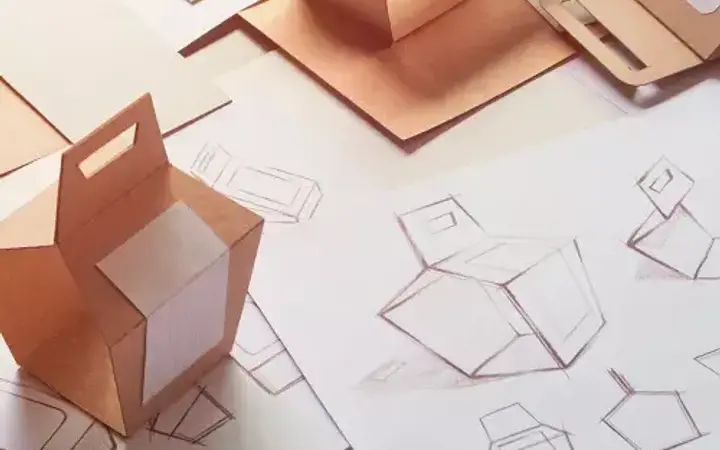How to protect product and branding designs with IP rights
Wendy Crosby

When building an IP portfolio, design rights are often overlooked in favour of patent and trade mark protection. However, all three can have crucial roles to play to effectively safeguard your products. Here, we detail why designs can be an important element of any IP strategy and explore their benefits when compared to patents and trade marks.
What is a design right?
A relatively low-cost and effective form of IP protection, design rights can cover many different aspects of a product or its packaging. They are commonly used in combination with other types of IP right to establish strong levels of protection.
Most brands are likely to benefit from registering trade marks to protect their name or logo and patents to protect their underlying product, invention or manufacturing process. Registered designs could be used to protect other valuable and differentiating aspects including the product’s shape, decorative surface features on its packaging or even the shape of the packaging itself.
The speed at which design protection can be granted, both in the UK and EU, provides a significant advantage over other forms of IP right. This is especially true in fast-moving sectors like consumer electronics, where a product’s shelf life may be short. A design registration can be issued within a few weeks in the UK and a matter of days in Europe. With registered designs, you can quickly possess enforceable rights.
This is particularly useful when competitors look to copy your products, pinching elements of your design to piggy-back on your reputation. While this may avoid patent infringement, possessing design rights can be harnessed to take technically inferior competitor products off the shelf.
Ideal companions
In the fashion industry, companies invest a significant amount of time and money designing products such as sunglasses, handbags and shoes, where success usually comes down to design.
However, many neglect to take the final steps of maximising investment value through appropriate use of registered design protection. Often, the devil is in the detail in relation to the contours of the sunglasses or the buckle of the handbag. Such unique elements are ripe for design protection, as competitors can then be stopped from making products that incorporate these same elements, even without applying your trade mark or branding. This characteristic makes design rights an ideal companion to trade mark rights as they can enhance and strengthen your brand identity, providing enforceable protection from the very early stages of brand development.
Design rights are also great companions for patent protection. While patents provide strong protection for the technical aspects of a product, there is a delay before grant of two to three years while the search and examination process is conducted. This means that you may be unable to take action against a competitor that starts selling a product highly like your own until your patent has been granted. By protecting aspects of the appearance of the device with design rights, enforceable and cost-effective IP protection can be gained quickly. Since registered rights give you a monopoly in the marketplace, your competitors could be forced into time-consuming and costly product redesigns while your patent applications are pending.
A wide scope of protection
Many people consider designs to be less valuable than patents due to their scope, which is limited to the appearance of a product. However, by strategically selecting different features for protection, it’s possible to build a defensive wall around your product that makes it very difficult for competitors to copy even a small detail without risking infringement.
Such holistic protection is well demonstrated in a technology product like a smart watch, where design rights could be used to protect both its physical appearance and aspects of its digital display. Design rights are key to protecting modern technologies such as mobile apps and graphical user interfaces (GUIs) as they can protect both 2D and 3D features.
The design right filing process
The process for filing design rights is applicant-friendly, as multiple applications can be used to allow an applicant to group designs together in a single application, even where they don’t share the same visual elements. This is true in both the UK and EU, with official fees set so that the greater the number of designs in an application, the lower the ‘per design’ cost of registration. Strong protection can be achieved by grouping together many different designs or selecting different combinations of features around a central design (to protect different variations of a product), as this means that a competitor can still infringe at least one of your design registrations without copying the entire product.
Designs are registered for an initial five-year period and protection can be renewed for up to 25 years in five-year increments. For products with a short shelf-life, the initial five-year period is likely enough to ensure that your products are well protected while they’re on sale.
It’s always best to work closely with an experienced IP attorney to develop the most effective filing strategy for your designs.
The jewel in your IP crown
I like to think of design rights as the ‘Cinderella’ of the IP world — regularly overlooked, routinely undervalued but can turn out to be the jewel in the crown of your IP portfolio.
In comparison to patents and trade marks, design rights are inexpensive to secure, making them accessible to both multinational corporations with long-term IP strategies and SMEs and start-ups, who must be more agile and carefully balance their budgets.
To find out more about how your product or brand could benefit from design right protection, get in touch with me at wendy.crosby@murgitroyd.com.






